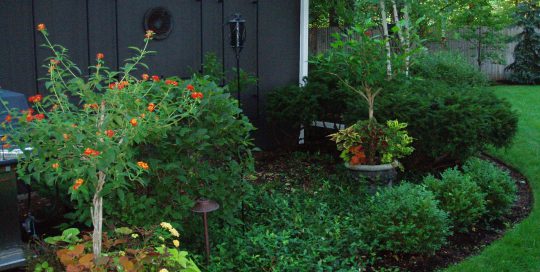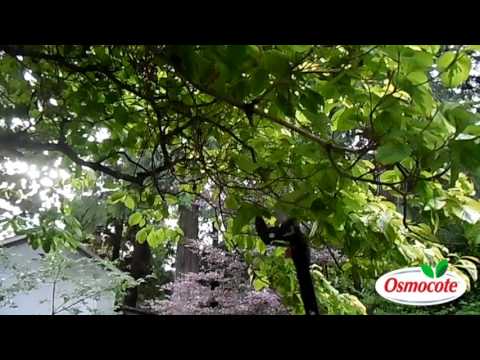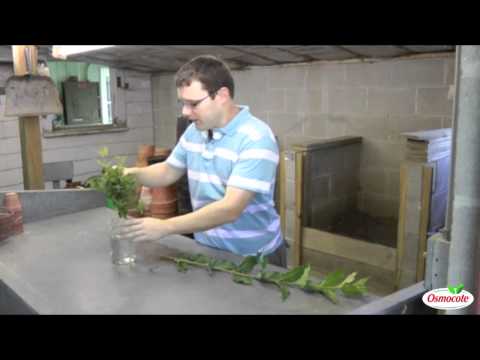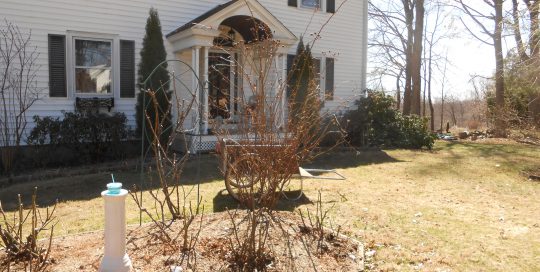A good time to prune trees and shrubs is any period before mid-April (north of the Ohio River). When woody plants are dormant is the easiest time to see signs of insects and disease. It’s also the easiest time to remove stems and branches. Regardless of where you live, pruning should be conducted before leaves unfurl. You want to be able to see the plant’s structure and the issues that may be waiting to injure it.
While some jobs are best left to the professionals, this article addresses those pruning chores that an amateur gardener can do for him or herself. Oh, yes, and while you are preparing for the pruning party, it won’t hurt to bring along a strong set of clippers, a good pair of loppers and a sharp pruning saw.
If it’s time to prune trees and shrubs identify specifically what needs is to be pruned
The first thing to consider before pruning is the identity of the tree or shrub. An overgrown lilac won’t bloom in springtime if it is severely pruned in winter. The same holds true for any spring blooming shrub, including Viburnum, Forsythia, and flowering quince; or trees such as crabapple, redbud and serviceberry. If possible, pruning should be done on these plants after they bloom. But if you see crossed branches, sucker growth or watersprouts, they should be taken care of now.
When it’s time to prune trees and shrubs, start with suckers and watersprouts
Suckers are straight, unbranched stems that sprout from the plant’s root system. These appearing around the base of a tree or shrub. They are easy to recognize when formed by a single-stemmed tree like a crabapple. However, they will be smooth and lighter in color than the desired stems.
According to Rosie Lerner, Extension Consumer Horticulture Specialist, Purdue University, the succulent growth put out by suckers and watersprouts is often susceptible to disease and insects. It’s best to keep up with their removal on a regular basis, and a warmish winter day is the perfect time. Regardless, they should be removed any time they’re spotted. The earlier these vigorous shoots are removed, the better. Don’t feel you must wait until the tree or shrub is dormant. Remove suckers at or just below the soil line using sharp pruning shears.
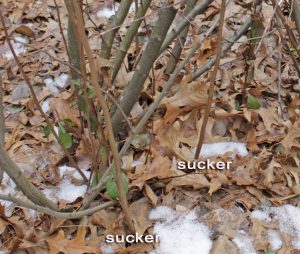
Flowering quince should be checked for sucker growth (photo by Jean Starr)
Watersprouts are especially easy to spot on dormant trees and shrubs. These unbranched, vertical shoots emerge at right angles to branches. They should be pruned back to their point of origin, avoiding injury to the remaining branch. Be careful to not leave a stub.
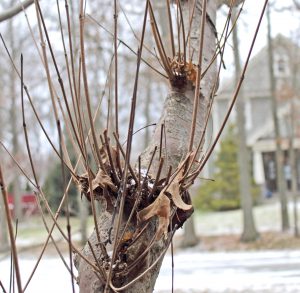
Watersprouts on Chinese Dogwood (photo by Jean Starr)
Look for trapped debris in branches
High winds in the fall and winter storms sometimes trap debris in the branches of trees. Examples could be oak limbs stuck in a nearby crabapple or tulip tree stems stuck in a neighboring lilac. Depending upon height, the debris may require a long-handled implement like the extendable tree pruner. A 12-foot long pruner is great for cutting branches no bigger than 1¼” diameter. I like to use it to extract dead branches I couldn’t normally reach. The pruner also includes a saw blade for cutting through thicker branches while you stand safely on the ground.
How to spot insects and disease damage
Rex Bastian, International Society of Arboriculture Board Certified Master Arborist® with Davey Tree, suggests that insects and diseases sometimes leave indicators of their presence that can be spotted during the dormant season. “Diseases that affect the wood, such as cankers, can be identified because they distort or cause lesions in the wood. Some conifer diseases, such as tip blights or needlecasts, can discolor needles and shoots to the point where they are obvious.”
Look closely at the bark on deciduous trees, where you may find evidence of insects. An example is a borer which leaves tell-tale holes in the bark or stem. The holes result from either beetle or moth larvae that tunnel through the plant. The holes may indicate an old infestation, but plants with such signs should be watched during their growing season for dead branches or premature leaf drop.
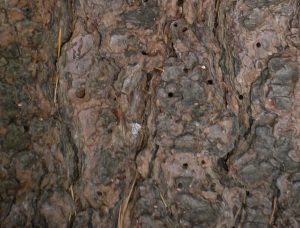
Bark Beetle Emergence Holes (photo by Davy Tree Expert Co.)
“Overwintering scale insects can be observed on twigs or foliage,” Bastian advises. “Some sapsucking insects, like the boxwood psyllid, distort foliage that persists into the winter, giving notice of their presence.”
The boxwood psyllid is already gone when you see signs of its damage in mid-winter. Make yourself a reminder to trim back the damaged stems in early spring, ideally when the threat of sub-zero weather has passed, say early-to-mid March. Throughout the summer, keep an eye on the boxwood for repeated infestation.
Prune to correct planting mistakes
Who hasn’t planted a tree or shrub that’s outgrown its space? I planted a weeping katsura (Cercidiphyllum japonicum) ‘Pendulum’ too close to my driveway several years ago, and asked Bastian, the master arborist, for his recommendations. He advised: “Trees that begin to overgrow their allotted space can be safely reduced in size as long as the process is started before it gets out of hand. The important thing not to do is simply chop it back to where you want it. Growth can be directed by skillful pruning, but it needs to be done by someone who knows what they are doing. Repeat pruning will likely be required every few years to keep the tree in bounds.”
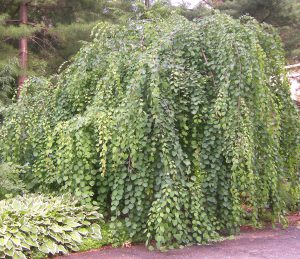 Weeping katsura planted too close to driveway (photo by Jean Starr)
Weeping katsura planted too close to driveway (photo by Jean Starr)
I had been shaping the Katsura tree for the past several years. But I missed a few years and its branches now are lightly feathering my car each time I pull into the garage. I will have to deal with those thin, flexible branches before they become strong, thick branches and rip my side mirror off.
My flowering quince, ‘Double Take Scarlet’, blooms well and is thornless, but four years in my garden and it has gotten out of hand. Taking a look at where its stems emerge from the ground told me why. Sucker growth has emerged from its roots, and I was easily able to remove each stem with clippers. I made a mental note to check for this issue each winter, so that I can prune these and improve the plant’s bloom.
So if you’ve been thinking of settling in for a pre-season nap, think again. It’s time to prune trees and shrubs! Dress up in some gardening-worthy togs and pick up your favorite cutting implement. Look for suckers and watersprouts, signs of insects or disease, and potential problems down the line. In other words, it’s the best time of year to see what your trees and shrubs might be hiding.
Recommended tools of the pruning trade
- Felco: Because of my limited hand strength, I use Felco 12’s, which have a rotating handle that makes clipping stems easier.
- Fiskars: The Fiskars Extendable Tree Prunerhas allowed me to prune branches I would otherwise need a ladder to reach.
- Silky: These top-rated saws are favored by professionals, but there is no reason homeowners can’t use them. I have the Silky Zubat 270and am amazed each time it cuts through branches like a hot knife through butter.

